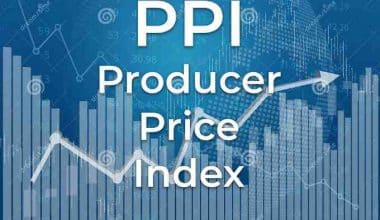A business valuation is critical for both investors and buyers. Gaining the attention and interest of those with the financial capital you seek requires evidence of value. How can an investor know how much money to invest if you can’t show them the value of your business? The following is an exploration of some common financial terms and methods used to value businesses, as well as why some companies may be valued highly despite their small size.
What Is a Business Valuation?
The process of determining the economic value of a business, also known as company valuation, is known as business valuation. During the valuation process, all aspects of a business are examined to determine its value as well as the value of its departments or units.
A company valuation can be used to determine the fair value of a business for a variety of purposes, including determining sale value, establishing partner ownership, taxation, and even divorce proceedings. Owners frequently turn to professional business evaluators for an objective estimate of the value of their business.
Why Do You Need to Know the Value of Your Small Business?
There are a variety of reasons why you might need to value your business, including:
- The business is for sale.
- You’re attempting to entice investors.
- You intend to sell stock in your company.
- A bank loan against the business is required.
- You need to fully comprehend the expansion of your company.
The most common of the aforementioned reasons are investment and sales. With a value assigned to your business, you can tell an investor, stakeholder, buyer, or banker that it is worth X amount and that if you want Y percentage of it, you must pay Z.
What are the Factors to Consider When You Want to Value a for Business
- Business Size
- Profitability
- Market Stability and Growth Rate
- Long-Term Competitive Advantage
- Potential for Future Growth
#1. Business Size
When valuing a company, one of the most common factors is its size. Generally, the larger the business, the higher the valuation. Because smaller companies have less market power, the loss of key leaders has a greater negative impact. Furthermore, larger businesses are more likely to have a well-developed product or service and, as a result, more readily available capital.
#2. Profitability
Is your company profitable?
If this is the case, it is a good sign because businesses with higher profit margins are more valuable than those with low margins or profit loss. Understanding your sales and revenue data is the primary strategy for valuing your business based on profitability.
#3. Market Traction and Growth Rate
Your company is compared to competitors when valuing a company based on market traction and growth rate. Investors want to know how big your industry’s market share is, how much of it you control, and how quickly you can capture a portion of it. The sooner you enter the market, the higher the valuation of your company.
#4. Long-Term Competitive Advantage
What distinguishes your product, service, or solution from the competition?
With this method, the way you provide value to customers must set you apart from the competition. If you find it difficult to maintain this competitive advantage over time, it may have a negative impact on the valuation of your company.
#5. Prospects for Future Growth
Is it expected that your market or industry will expand? Is there any chance of expanding the company’s product line in the future? These and other factors will increase the value of your business. If investors believe your company will grow in the future, the company valuation will rise.
How to Value a Business
Subtracting liabilities from assets is one method for calculating a company’s valuation. However, this straightforward method does not always provide a complete picture of a company’s value. This is why there are several other methods.
Book value, discounted cash flow analysis, market capitalization, enterprise value, earnings, and the present value of a growing perpetuity formula are six business valuation methods that provide insight into a company’s financial standing.
#1. Book value
Calculating a company’s book value using information from its balance sheet is one of the simplest methods of valuing it. However, due to its simplicity, this method is noticeably unreliable.
Begin by deducting the company’s liabilities from its assets to determine the owners’ equity. Then, any intangible assets should be excluded. The figure that remains represents the value of any tangible assets owned by the company.
Due to historical cost accounting and the principle of conservatism, balance sheet figures cannot be equated with value, as Harvard Business School Professor Mihir Desai points out in the online course Leading with Finance. Basic accounting metrics do not provide an accurate picture of a company’s true value.
#2. Discounted Cash Flows
A company can also be valued using discounted cash flows. This technique is highlighted as the gold standard of valuation in Leading with Finance.
The process of estimating the value of a company or investment based on the money, or cash flows, it is expected to generate in the future is known as discounted cash flow analysis. Based on the discount rate and time period of analysis, discounted cash flow analysis computes the present value of future cash flows.
Discounted Cash Flow = Terminal Cash Flow / (1 + Cost of Capital) # of Years in the Future
Discounted cash flow analysis has the advantage of reflecting a company’s ability to generate liquid assets. The difficulty with this type of valuation is that its accuracy is dependent on the terminal value, which can vary depending on your assumptions about future growth and discount rates.
#3. Market Capitalization
Market capitalization is one of the most basic measures of the value of a publicly traded company. The total number of shares multiplied by the current share price yields this figure.
Market capitalization equals the share price multiplied by the total number of shares.
One of market capitalization’s flaws is that it only accounts for the value of equity, whereas most companies are financed through a combination of debt and equity.
In this case, debt represents bank or bond investors’ investments in the company’s future; these liabilities are repaid with interest over time. Shareholders who own stock in the company and have a claim on future profits are represented by equity.
Let’s look at enterprise values, which are a more accurate measure of company value that accounts for these different capital structures.
#4. Enterprise Value
The enterprise value of a company is calculated by adding its debt and equity and then subtracting the amount of cash that is not used to fund business operations.
Enterprise Value = Debt + Equity – Cash
To demonstrate this, consider three well-known automobile manufacturers: Tesla, Ford, and General Motors (GM).
Tesla had a market capitalization of $50.5 billion in 2016. Furthermore, its balance sheet showed $17.5 billion in liabilities. Tesla also had approximately $3.5 billion in cash on hand, giving it an enterprise value of approximately $64.5 billion.
Ford had a market capitalization of $44.8 billion, $208.7 billion in outstanding liabilities, and a cash balance of $15.9 billion, for a total enterprise value of approximately $237.6 billion.
Finally, GM had a $51 billion market capitalization, $177.8 billion in balance sheet liabilities, and a $13 billion cash balance, for a total enterprise value of approximately $215.8 billion.
While Tesla’s market capitalization is higher than that of Ford and GM, Tesla is also more equity-financed. In fact, Tesla has financed 74% of its assets with equity, whereas Ford and GM have capital structures that rely heavily on debt. Equity accounts for nearly 18% of Ford’s assets and 22.3 percent of GM’s.
#5. EBITDA
When analyzing earnings, financial analysts prefer not to look at a company’s raw net income profitability. Accounting conventions frequently manipulate it in a variety of ways, and some can even distort the true picture.
To begin with, a country’s tax policies appear to be a distraction from a company’s actual success. They can differ across countries or over time, even if the company’s operational capabilities remain constant. Second, net income deducts debt holders’ interest payments, which can make organizations appear more or less successful based solely on their capital structures. Given these considerations, both are subtracted to calculate EBIT (Earnings Before Interest and Taxes), also known as “operating earnings.”
In normal accounting, if a company buys equipment or a building, the transaction is not recorded all at once. Instead, the business charges itself an expense known as depreciation over time. Amortization is similar to depreciation, but is used for things like patents and intellectual property. In both cases, no money is spent on the expense.
Depreciation and amortization can make the earnings of a rapidly growing company appear worse than those of a declining one. Behemoth brands, such as Amazon and Tesla, are more vulnerable to this distortion because they own multiple warehouses and factories that lose value over time.
It is easier to investigate ratios once you understand how to calculate EBITDA (Earnings Before Interest, Taxes, Depreciation, and Amortization) for each company.
Tesla had an Enterprise Value to EBITDA ratio of 36x, according to the Capital IQ database. Ford’s is 15x, while General Motors’ is 6x. But what exactly do these ratios mean?
#6. A Growing Perpetuity Formula’s Present Value
These ratios can be thought of as part of the growing perpetuity equation. A growing perpetuity is a type of financial instrument that pays out a fixed amount of money each year and grows in value each year. Consider a retirement stipend that must increase every year to keep up with inflation. The growing perpetuity equation can be used to calculate the current value of a financial instrument.
A growing perpetuity’s value is calculated by dividing cash flow by the cost of capital, less the growth rate.
Growing Perpetuity Value = Cash Flow / (Cost of Capital – Growth Rate)
So, if someone planning to retire wanted to receive $30,000 per year in perpetuity with a 10% discount rate and a 2% annual growth rate to cover expected inflation, they would need $375,000—the present value of that arrangement.
Read Also: Direct Method Cash Flow: Definition, Examples & Advantages
What is this got to do with business? Consider a company’s annual EBITDA growing perpetuity paid out to the organization’s capital holders. If you think of a company as a stream of cash flows that produce annually and you know the discount rate (the company’s cost of capital), you can use this equation to determine its enterprise value quickly.
You’ll need some algebra to convert your ratios for this. For example, if Tesla has an enterprise-to-EBITDA ratio of 36x, it means that Tesla’s enterprise value is 36 times greater than its EBITDA.
Look at the growing perpetuity formula and use EBITDA as the cash flow and enterprise value as the variable you’re trying to solve for. You’ll see that whatever you divide EBITDA by will give you an answer 36 times the numerator.
Use the following formula to calculate the enterprise value to EBITDA ratio: EBITDA divided by one over balance equals enterprise value. To calculate the ratio, enter the enterprise value and EBITDA values.
Enterprise Value = EBITDA / (1 / Ratio)
In other words, the denominator must be one-third-sixth of one percent or 2.8 percent. If you were to repeat this example with Ford, the denominator would be one-fifteenth or 6.7 percent. It would be one-sixth, or 16.7 percent, for GM.
When it is plugged back into the original equation, the percentage equals the cost of capital. You could imagine Tesla having a 20 percent cost of money and a 17.2 percent growth rate.
The ratio doesn’t tell you everything, but it does show that the market expects Tesla’s future growth rate to be close to its cost of capital. Tesla’s first-quarter sales were up 69 percent from last year’s period.
Business Valuation Accreditation
Accredited in Business Valuation (ABV) is a professional designation given to accountants such as CPAs who specialize in calculating the value of businesses in the United States. The American Institute of Certified Public Accountants (AICPA) oversees the ABV certification, which requires candidates to complete an application process, pass an exam, meet minimum Business Experience and Education requirements3, and pay a credential fee (the annual fee for the ABV Credential was $380 as of March 11, 2022).
Maintaining the ABV credential also necessitates meeting minimum standards for work experience and lifelong learning. Successful applicants are granted the right to use the ABV designation alongside their names, which can improve job opportunities, professional reputation, and pay. The Chartered Business Valuator (CBV) designation is a professional designation for business valuation specialists in Canada. The Canadian Institute of Chartered Business Valuators provides it (CICBV).
Related Articles
- Stock Market Calculator: See how your Market can grow
- PROPERTY VALUATION: Methods For Valuing Investment Properties
- Business Valuation: All you need to know [Detailed Guide]
- MORTGAGE VALUATION: How Long After Valuation To Mortgage Offer
- BUSINESS VALUE: Meaning & How to Calculate It!!!






